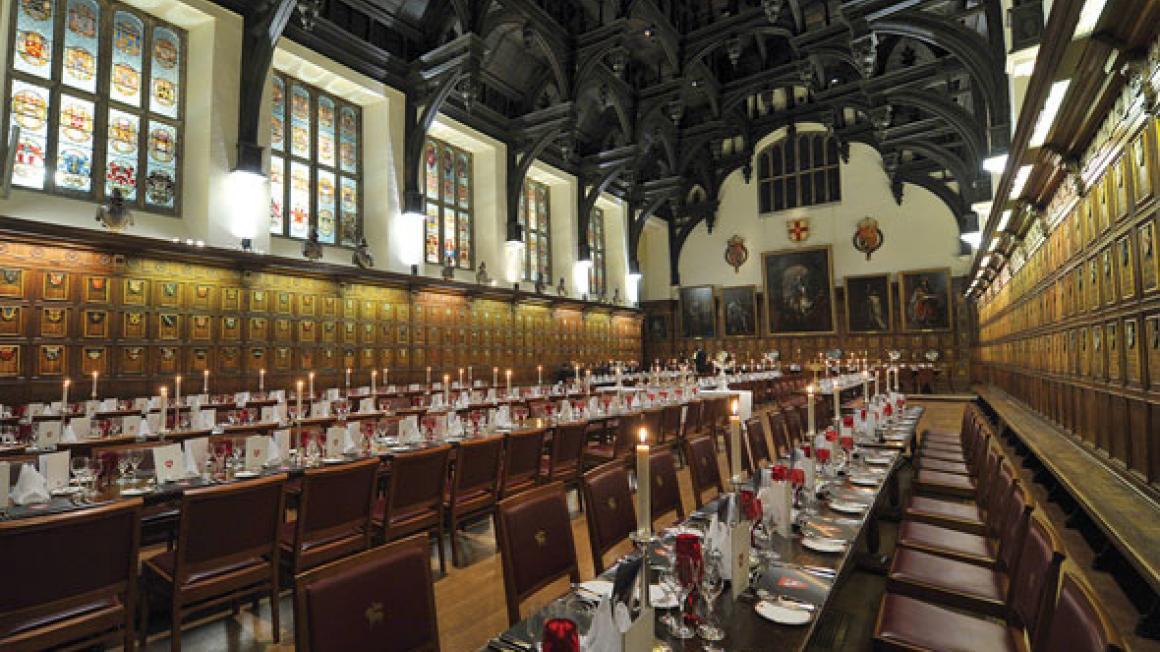Vintage venues and classical cool
From its conception Spencer House was recognised as one of the most ambitious and splendid private palaces ever built in London and is today the city's only great eighteenth-century house to survive intact.
RIBA Venues
RIBA Venues is the events arm of the Royal Institute of British Architects in central London. The Grade II* listed headquarters is a classic example of an early 1930s design. At the time the structure was the first building without corridors and a perfect compromise between neo-classicism and modernism. Few buildings better illustrate the sophisticated use of light, which lifts the spirits of all those who visit. The richness of material and English craftsmanship is evident from the impressive bronze front doors, the etched glass windows to the sculpted figures telling the story of its creation.
Chiswick House & Gardens
Chiswick House is the first and one of the finest examples of neo-Palladian design in England. It is set in beautiful Grade 1 listed gardens in West London. Created by the third Earl of Burlington, who was inspired on his grand tour by the architecture of ancient Rome and 16th century Italy, Chiswick House is a stunning homage to the work of Renaissance architect Palladio.
Twickenham Stadium
The Twickenham Cellar is Twickenham Stadium's most exclusive dining facility. Concealed deep within the West Stand, the Cellar is the stadiums best kept secret.
Museum of the Order of St John
The Order of St John (also known as the Knights of Malta) was established in Jerusalem in 1080 to care for pilgrims who had made the long journey to the holy city. St John's Gate is the mediaeval gatehouse of the original Priory of the Order of St John which covered eleven acres in Clerkenwell, just outside the walls of the City of London. Surprisingly few people know it exists; its beautiful vaulted arch and gilded coats of arms are a familiar sight to locals, but it is a very well-kept secret outside the area.
Guildhall
The part of Guildhall known as the Great Hall is the largest room, with its splendid high-arches ceiling, Gothic stained glass windows and monuments to national venues. Today it is where state visitors and glamorous occasions are held, but in the past events have not always been so festive. A tablet on the north wall, holds a list of important trails that took place here between 1548 and 1615, the most famous being that of Lady Jane Grey.
Westminster Abbey
The Cloister were, in pre-Reformation days, one of the busiest parts of the monastic precincts and, with windows filled with glass, rushes strewn on the floor and braziers burning, would have been cosier than they seem today. They were used by the monks for meditation and exercise, besides providing access to the main monastic buildings. Each of the four Cloisters is approximately 100 feet in length, dating mainly from the 13th to the 15th centuries. The Cloisters were rebuilt after the Great Fire of 1298.
Middle Temple
Middle Temple has one of the finest examples of an Elizabethan Hall in the country with a stunning double hammer beam roof carved from the oak of Windsor Forest. Built in the 1570's this Hall remains virtually unaltered to this day. The traditional oak panelled walls are festooned with Coats of Arms and the impressive stained glass windows are memorials to notable past members of Middle Temple – for example Sir Walter Raleigh's Coat of arms in the stained glass windows are next to that of Sir John Popham who ordered his execution!
Tower of London
The Tower of London, founded by William the Conqueror in 1066 to keep hostile Londoners at bay, is one of the world's most famous fortresses and one of Britain's most visited historic sites.
Harrow School
Harrow School offers eight unique venues across its 265 acre landscape. One of our most monumental venues is The Alex Fitch. This room is dedicated to the memory of a previous student of the school, Second Lieutenant Alex Fitch, R.G.A. who died in service in 1918 aged just 19. This stunning room, located in Harrow School's War Memorial, was a gift from Alex's mother, Lady Fitch to preserve the memory of her only son.
Dulwich Picture Gallery
Dulwich Picture Gallery is one of the finest examples of gallery architecture in Britain. It was designed and built by the leading architect Sir John Soane. The commission also included a mausoleum for the Gallery's founders, as well as almshouses.
Queen's House, Royal Museums Greenwich
In the 1600's, Inigo Jones designed the Queen's House Greenwich and inspired the beginning of a new style of beautifully proportioned, symmetrical buildings called 'Palladian'. The Queen's House is renowned as the first Classical building in England.
Sir John Soane's Museum
Set in a Grade I listed building which is noted for its outstanding originality, Sir John Soane's Museum is often considered the world's greatest house museum. Behind the Museum's distinctive projecting façade lies London's most unexpected interior – every aspect of which reflects its creator's architectural ingenuity and extraordinary imagination. Former home of the neo-classical architect Sir John Soane, the Museum has remained largely untouched since his death in 1837.


